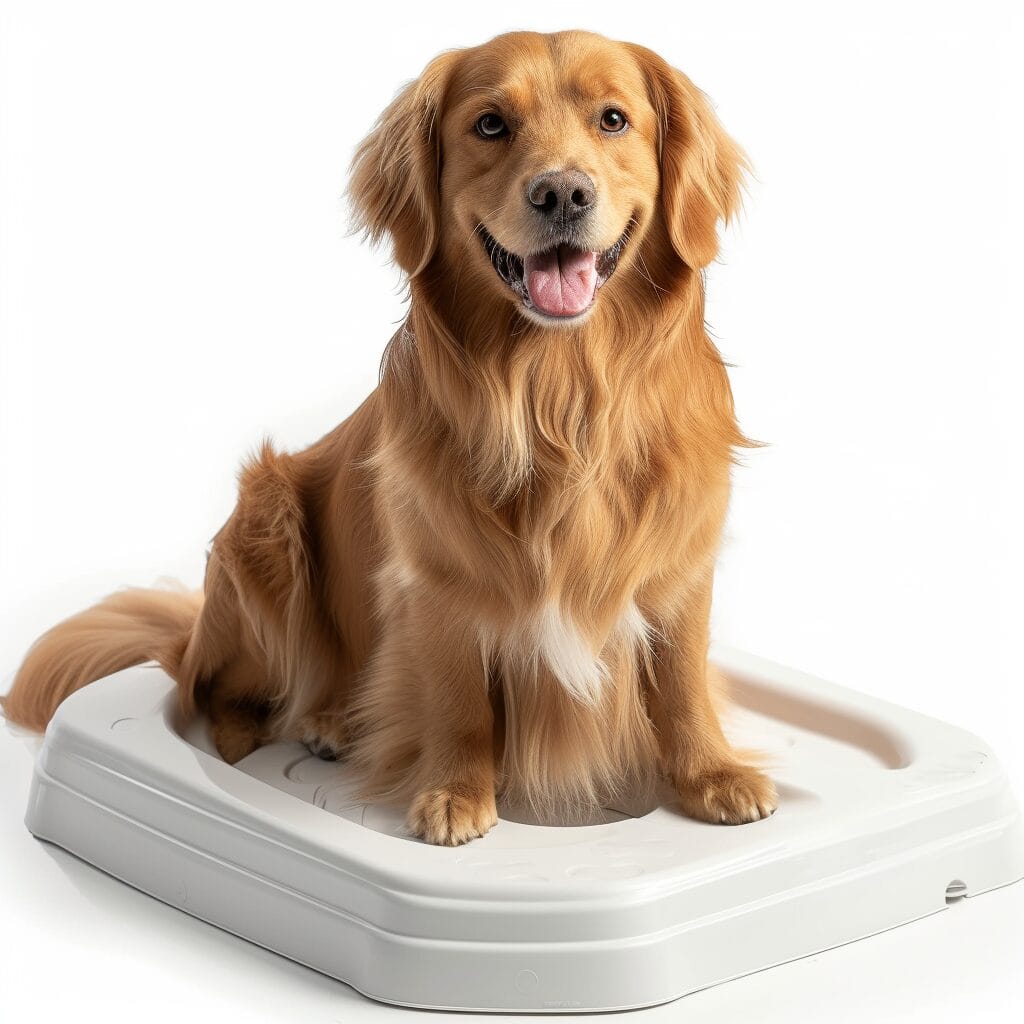Did you know that dogs, just like humans, can get fevers? In fact, it’s estimated that around 20% of dog patients visiting the vet have a fever. So, how do dog owners tell if their furry friend is running hot? Understanding the signs of diseases and knowing what to look for can help pet parents take quick action when needed.
One way to check for a fever in your dog is by feeling their nose or ears. A warm and dry nose in dogs could be an indication of elevated body temperature and fevers. Watch out for symptoms such as lethargy, loss of appetite, shivering or panting excessively – these could all be red flags for dog fevers or diseases. Knowing how to recognize these signs early on can make all the difference in ensuring your pup gets the care they need.
How to Tell if Your Dog Has a Fever
Understanding Normal Dog Body Temperature

Average Body Temperature
A normal body temperature for dogs typically falls within the range of 100.5°F to 102.5°F. However, it’s important to note that this range can vary based on factors such as breed, age, and activity level. For example, smaller breeds may have slightly higher average temperatures than larger breeds.
Understanding your dog’s baseline temperature is crucial for detecting any deviations that could indicate a fever. By regularly taking your dog’s temperature when they are healthy and relaxed, you can establish their normal range and be better equipped to recognize when something is amiss.
It’s also essential to consider your dog’s recent activities before assessing their body temperature. After strenuous exercise or exposure to hot weather, it’s not uncommon for a dog’s body temperature to temporarily rise above the typical range.
Signs of Fever
Detecting whether your dog has a fever involves observing their behavior and looking out for physical symptoms. Some common indicators of a potential fever in dogs include:
- Lethargy: If your normally active pup seems unusually tired or uninterested in playtime, it could be a sign of an elevated body temperature.
- Loss of Appetite: A sudden decrease in appetite or reluctance to eat may signal an underlying issue such as fever.
- Warm Ears and Paws: Touching your dog’s ears and paws can provide clues about their body temperature; if they feel warmer than usual, it might indicate a fever.
- Shivering or Panting: While shivering can occur with both high and low fevers, excessive panting without any apparent cause might suggest elevated body temperatures.
Monitoring other symptoms like coughing, vomiting, diarrhea, or nasal discharge can help paint a clearer picture of your pet’s health status.
Recognizing Behavioral Fever Indicators in Dogs

Changes in Behavior
If you notice changes in your dog’s behavior, such as lethargy or decreased appetite, these could be signs of a fever. Your dog might also exhibit restlessness or increased thirst, both of which are behavioral indicators of fever. Pay attention to any unusual aggression or clinginess in your dog. These changes can be a good indication that something is not right with your pet.
Seeking Veterinary Attention
As dog owners, it’s crucial to keep a careful eye on our pets and watch for any irregularities. If you observe behavioral signs that suggest your dog may have a fever, it’s essential to seek veterinary attention promptly. A vet will be able to diagnose the condition accurately and provide appropriate treatment if necessary. Remember that some diseases and disorders can manifest through changes in behavior, so being attentive to these signs can help catch potential problems early.
Paying close attention to their behaviors is key. By recognizing the subtle indications of fever in dogs, pet parents can take proactive steps toward ensuring their beloved pets’ health and happiness.
Physical Symptoms of Fever in Canines

Observable Physical Signs
There are several symptoms that can indicate a potential issue. Keep an eye out for physical signs such as warm ears, dry nose, or shivering. These could all be indicators of a fever in your dog. If their ears feel warmer than usual and their nose is drier than normal, it might suggest they have a fever.
If you notice your dog coughing, sneezing, or vomiting without any apparent cause, these could also be signs of a fever. Red or inflamed gums and rapid breathing may point to the presence of a fever in your pet. It’s essential to pay attention to these observable physical symptoms as they can provide crucial insights into your dog’s health.
Other Potential Indicators
Apart from the more obvious signs like warm ears and dry nose, there are other less noticeable indicators that may signal the presence of a fever in dogs. For instance, if you observe changes in behavior such as lethargy or decreased appetite along with any of the mentioned physical symptoms; this combination could strongly suggest that your pet has developed a fever.
In some cases where underlying infections or inflammations are present causing discomfort for your furry friend, tooth infections and serious injuries can also lead to high fevers. Furthermore, certain medical conditions like cancer can result in persistent fevers which require immediate attention from a veterinarian to diagnose and treat effectively.
Essential Tools for Measuring Dog Temperature

Invest in a Reliable Digital Thermometer
Having the right tools is crucial. Investing in a reliable digital thermometer specifically designed for dogs is essential. Look for a flexible tip thermometer that can be inserted rectally, as this method provides the most accurate reading. Make sure to label the thermometer clearly for pet use only to avoid cross-contamination.
It’s important to note that using a regular human thermometer may not provide accurate results, so it’s best to opt for one specifically tailored for canine use. This ensures precise readings and avoids any potential discomfort or harm to your furry friend.
Petroleum Jelly or Water-Based Lubricant Aid
Before taking your dog’s temperature, ensure you have petroleum jelly or water-based lubricant on hand. Applying a small amount of lubricant to the tip of the thermometer makes insertion more comfortable and less stressful for your pet. This step is especially crucial if you’re checking your dog’s temperature regularly due to illness or recovery from surgery.
By making sure that the process is as comfortable as possible, you’ll help reduce any anxiety or resistance from your dog when it’s time to take their temperature. This simple step can also prevent any potential injury during the process.
Rubbing Alcohol and Cotton Balls
After each use, cleaning and disinfecting the thermometer are vital steps in maintaining hygiene and preventing infections. Have rubbing alcohol and cotton balls readily available so that you can clean the thermometer thoroughly after every use.
Dip a cotton ball into rubbing alcohol and gently wipe down both ends of the thermometer before storing it away safely until its next use. Ensuring proper sanitation not only protects your dog from harmful bacteria but also prolongs the lifespan of your digital thermometer.
Step-by-Step Guide to Taking Your Dog’s Temperature

Proper Restraint
Gently restrain your pup and ensure they are calm before attempting to take their temperature. This is crucial for an accurate way to measure their body temperature. You can gently hold them by the collar or have someone assist you in keeping them still.
Taking a dog’s temperature requires patience and care, especially if your furry friend is feeling unwell. It’s essential to create a calm environment for your dog, as any sudden movements may lead to inaccurate readings.
Correct Technique
Carefully insert the thermometer into the rectum or ear canal according to the device instructions. For rectal thermometers, lubricate with petroleum jelly and insert about half an inch into the rectum. For ear thermometers, gently place it in the ear canal and follow the manufacturer’s guidelines for positioning.
When using a digital thermometer, be sure that it has been specifically designed for either rectal or ear use on dogs. Using a human thermometer could result in inaccurate readings due to differences in design and calibration.
Waiting for Stabilization
Hold the thermometer steady and wait for the reading to stabilize before removing it from your dog’s body. This waiting period ensures that you get an accurate reading of their body temperature without any fluctuations caused by movement during measurement.
After taking your dog’s temperature, be sure to clean/disinfect the thermometer thoroughly according to its instructions before storing it away safely until its next use.
Interpreting Your Dog’s Temperature Reading

Understanding Fever in Dogs
A rectal temperature reading above 102.5°F could indicate a fever in dogs. If your dog’s temperature exceeds 103°F, it is crucial to consult with a veterinarian for further guidance and evaluation. Keep in mind that stress or recent activity can temporarily elevate a dog’s temperature.
When your dog has a fever, their body temperature rises above the normal range, indicating an underlying condition that needs attention. A high fever could be caused by various factors such as infections, inflammations, or other unknown origins.
It’s essential to monitor your dog’s behavior and overall well-being when suspecting a fever. Look out for signs of discomfort, lethargy, loss of appetite, shivering or panting excessively – these could all point towards an elevated body temperature.
Responding to Elevated Temperatures
If you notice that your dog has an elevated temperature and seems uncomfortable or unwell, there are steps you can take at home before seeking professional help from a veterinarian.
Firstly, ensure your pet is kept in a comfortable environment with access to cool water and shade if they are outside on hot days. You can also use damp cloths on their paws and ears to help them cool down naturally.
Secondly, avoid giving any over-the-counter medications meant for humans without consulting with a vet first as this can worsen the situation due to differences in metabolism between humans and dogs.
Lastly but most importantly – never attempt to diagnose or treat the underlying cause yourself without professional advice from a qualified veterinarian who will perform necessary tests based on symptoms exhibited by the animal.
Immediate Steps for Managing Dog Fever at Home

Hydration and Monitoring Intake
Ensuring that your dog stays hydrated is crucial when they have a fever. Provide them with plenty of fresh water and closely monitor their intake. If your dog seems reluctant to drink, try offering them ice cubes or small amounts of water frequently throughout the day. By doing so, you can help prevent dehydration, which often accompanies fevers in dogs.
It’s important to keep an eye on how much water your dog is consuming. Increased water consumption could indicate a fever, while decreased intake may signal other underlying issues. Monitoring their drinking habits will provide valuable information for your vet if you need to seek professional help.
Comfortable Resting Area
Creating a comfortable resting area for your dog is essential when managing their fever at home. Ensure that the area is away from drafts and extreme temperatures – this will help maintain a stable environment for your pet as they recover.
A cozy bed or blanket can provide comfort during this time, helping to reduce stress and promote relaxation while they rest. It’s also beneficial to limit physical activity to allow them time to recuperate fully.
Cooling Techniques
While it’s important not to immerse your dog in cold water, using damp towels can be an effective way to cool them down gently if necessary. Dampening a towel with cool (not cold) water and placing it over their body can aid in reducing their body temperature without causing shock from sudden exposure to cold.
You might also consider using fans or air conditioning on low settings in the room where they are resting – these measures can assist in maintaining a comfortable temperature for your furry friend without being too harsh on them.
When to Seek Veterinary Care for a Febrile Dog

Persistent or Sudden Spike in Fever
If your dog‘s fever persists for more than 24 hours, it’s crucial to contact a vet. A prolonged fever could indicate an underlying health issue that needs professional attention. If your dog’s temperature suddenly spikes, reaching excessively high levels, veterinary care is necessary.
Seeking medical advice promptly can help identify the root cause of the fever and prevent any potential complications that may arise from an untreated or unmanaged condition. Remember, dogs cannot verbally communicate their discomfort; therefore, it falls upon you as a responsible pet owner to be vigilant and proactive in monitoring their health.
Signs of Distress or Severe Discomfort
It’s essential to seek immediate medical attention if your dog displays signs of distress or severe discomfort. Symptoms such as excessive panting, lethargy, vomiting, diarrhea, loss of appetite, and refusal to drink water are all red flags that warrant urgent veterinary care.
These signs often indicate more than just a mild illness and could point towards an underlying infection or other serious conditions requiring professional diagnosis and treatment. Your swift action in seeking veterinary care can make a significant difference in ensuring the well-being of your beloved pet.
Proactive Concerns About Your Dog’s Health
As a pet owner, being proactive about seeking professional advice when you have concerns about your dog‘s health is paramount. If you notice subtle changes in behavior such as increased restlessness or unusual patterns like excessive scratching without relief from itching – these are valid reasons to consult with a veterinarian.
Remember that early intervention is key. By taking prompt action based on even the slightest suspicion of something amiss with your dog’s well-being can lead to timely diagnosis and effective treatment plans.
Preventative Measures to Reduce Fever Risk in Dogs

Regular Veterinary Check-ups
Regular veterinary check-ups are essential for early detection of any underlying health issues in your dog. These check-ups can help identify potential problems before they escalate into something more serious. By catching these issues early, you can prevent them from developing into conditions that may cause a fever in your dog.
Ensuring that your dog is up-to-date on vaccinations and parasite prevention is crucial for maintaining their overall health. Vaccinations protect dogs from various diseases, some of which could lead to fevers if contracted. Similarly, parasite prevention, such as flea and tick control, helps reduce the risk of infections that might result in a fever.
Good Hygiene Practices
Practicing good hygiene around your dog and keeping them away from potentially infectious animals can significantly lower the risk of them developing a fever. Washing your hands after handling other animals or coming into contact with environments where other animals have been present can prevent the spread of harmful bacteria or viruses to your pet.
Ensuring that your dog’s living environment is clean and free from potential sources of infection is vital for preventing fevers. This includes regularly cleaning their bedding, toys, food and water bowls, and any areas where they spend time outdoors.
Conclusion
Congratulations! You’ve now gained valuable insights into identifying and managing fever in your furry companion. Remember, a dog’s normal body temperature ranges between 100.5°F and 102.5°F. By recognizing both behavioral and physical indicators of fever, using the right tools to measure temperature, and understanding when to seek veterinary care, you can ensure your dog receives the best possible care. Taking preventative measures such as regular check-ups and vaccinations can help reduce the risk of fever in your dog.
Now that you’re equipped with this knowledge, take proactive steps to monitor your dog’s health regularly. By staying attentive and responsive to any signs of illness, you can provide timely care and support for your beloved pet. Your furry friend will thank you for it!
Frequently Asked Questions
How can I tell if my dog has a fever?
You can tell if your dog has a fever by checking for behavioral indicators such as lethargy and loss of appetite, as well as physical symptoms like warm ears and dry nose. It’s essential to use a thermometer specifically designed for dogs to get an accurate reading.
What tools do I need to measure my dog’s temperature?
To measure your dog’s temperature accurately, you’ll need a digital rectal thermometer designed for canine use, water-based lubricant, and alcohol wipes for cleaning the thermometer before and after use.
How do I take my dog’s temperature?
Taking your dog’s temperature involves gently inserting the lubricated thermometer into their rectum. Hold it in place until it beeps or for about 2 minutes. Be sure to comfort your pet throughout the process to keep them calm.
When should I seek veterinary care for a febrile dog?
If your dog is exhibiting signs of fever such as weakness, vomiting, or difficulty breathing alongside an elevated temperature reading, it’s crucial to seek immediate veterinary care. A professional assessment will help determine the underlying cause and appropriate treatment.
What are some preventative measures to reduce fever risk in dogs?
To reduce the risk of fever in dogs, ensure they have proper nutrition, regular exercise, and access to clean water at all times. Protect them from extreme weather conditions and regularly check for ticks or other parasites that could transmit diseases.








